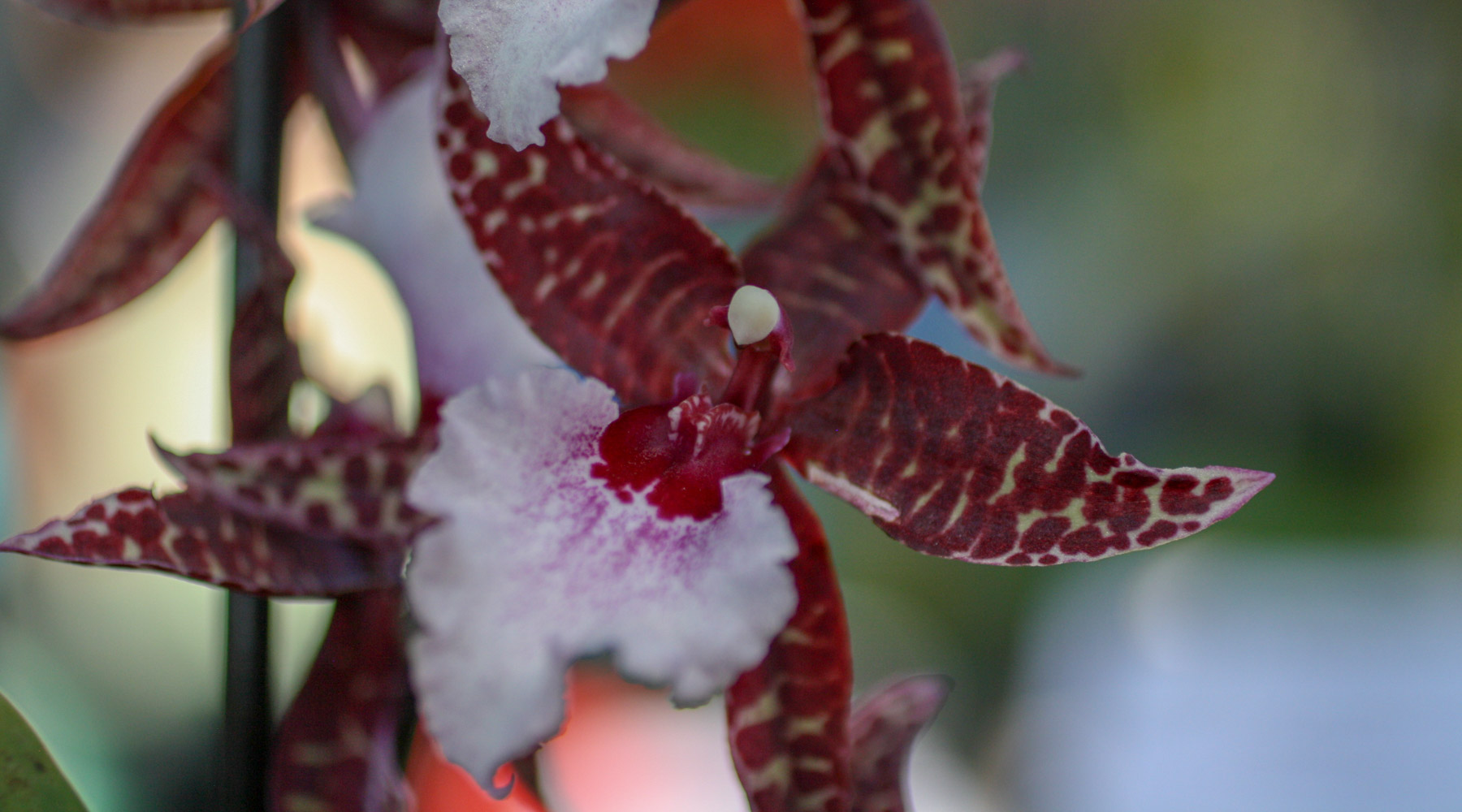
There’s a lot of misinformation about growing orchids. You may have heard many of these myths, but now it’s time for truth.
1. Orchids are Hard to Grow
While it’s true that there are many orchids that are best left to more experienced orchid growers or to those with different climates. There are many orchids that will thrive in a home environment – either near a windowsill or under lights.
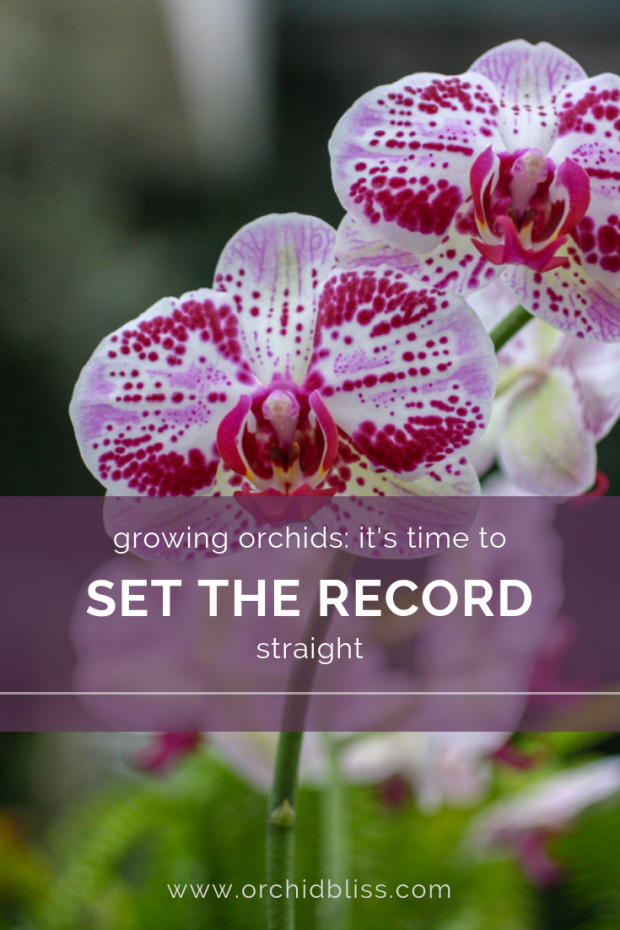
Some of the links on this page may be affiliate links. Click here to learn more.
2. All Orchids Require a Greenhouse to Thrive
This is the lie that initially kept me back from thinking I could successfully grow orchids. However, this site is dedicated to growing orchids that don’t need a greenhouse to thrive. It’s true that, depending on your climate, some orchids will certainly do better in a greenhouse – it is not a necessity.
3. You Can’t Grow Orchids If You Live In an Arid Climate
This lie ties in with the greenhouse lie. I thought that because I live in the desert I didn’t have enough humidity at home to support orchids. I knew that with a greenhouse, I would be able to provide the orchids with the humidity that they require.
I’ve found that my humidifier does a wonderful job of providing my orchids with enough humidity. I use a humidistat to monitor the humidity levels – home growers should aim for humidity levels no higher than 50%.
In all honesty, during the winter months, it is a challenge to keep my humidity levels up to 40%, but my orchids adapt and thrive. The key is to choose orchids that will thrive in the environment you can provide and avoid those that won’t.
4. Phalaenopsis Are the Easiest Orchids to Grow
You’ve probably heard over and over that phalaenopsis are the easiest orchids to grow. More than a question of hard or easy, it’s more about proper care. Whatever the orchid variety, if you can give the orchid the care it requires, then it’s an easy orchid.
Provide your orchids with the right amount of light, proper temperature, adequate humidity, and good air movement; there are many orchid varieties that you can properly care for.
5. Orchids are Expensive
While it is true that there are some orchids that can cost several hundred dollars. I’ve found that I can get many orchids between $20-30 – without shipping and less than $60 shipped – far less than a bouquet that would last less than 2 weeks.
Below Are Orchids that Can Thrive at Home
Phalaenopsis
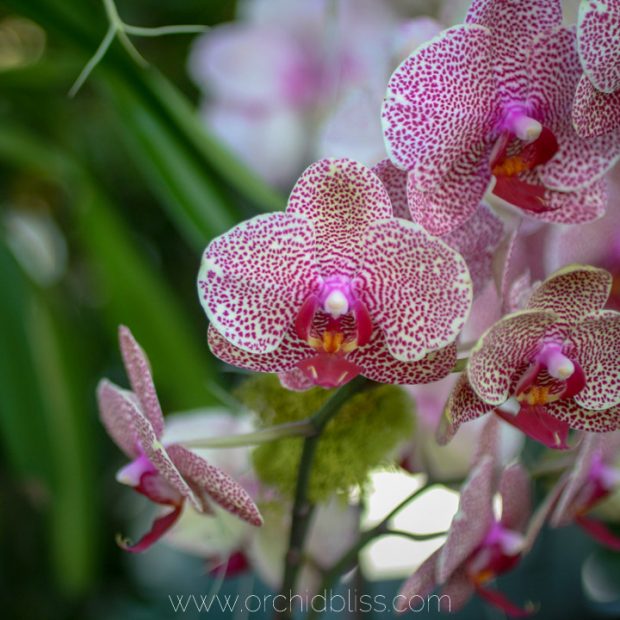
The phalaenopsis or moth orchid is the most widely available orchid on the market. Their long-lasting flowers and home-loving environment make it an ideal orchid.
PHALAENOPSIS ORCHIDSCattleya
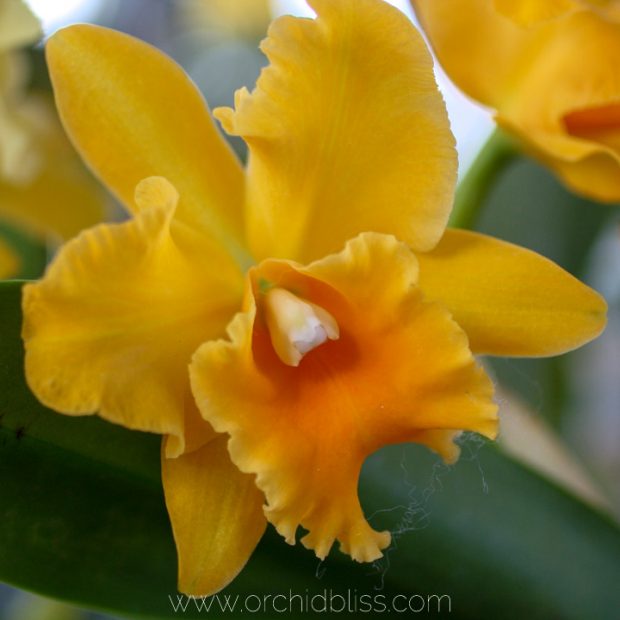
The cattleya is the quintessential corsage orchid. Its large showy flowers make them immediately recognizable as orchids.
CATTLEYA ORCHIDSDendrobium
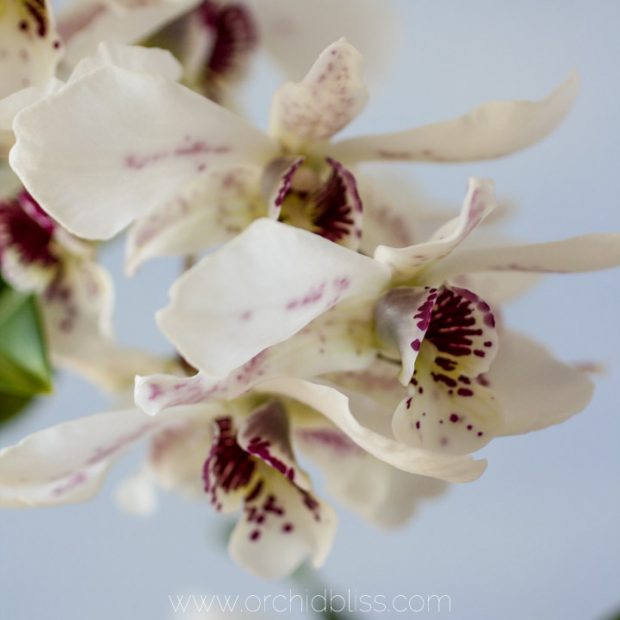
There are many dendrobium varieties, so it’s important to get one that fits your care style and environment. Those from the latouria, phalanthe, bigibbum and antelope sections are a good place to start. Tell the seller that those are the types of dendrobiums that you are interested in.
DENDROBIUM ORCHIDSZygopetalum
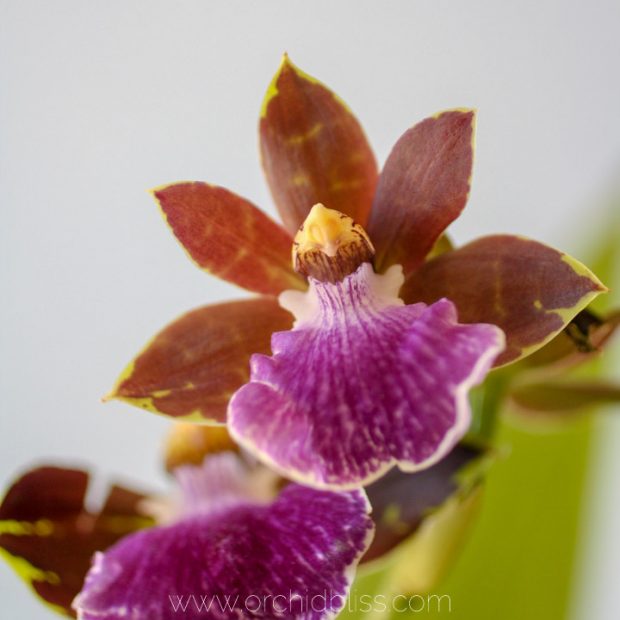
The zygopetalum has many things going for it: It’s a beautiful orchid with a great fragrance and easy care.
ZYGOPETALUM ORCHIDSPaphiopedilum
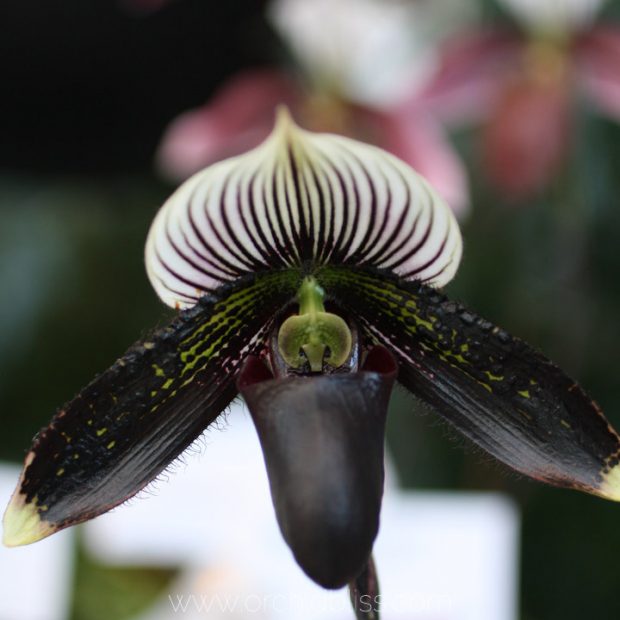
The paphiopedilum, or slipper orchid, is a statement orchid. It’s large, pendulous lower lip makes it an unforgetable orchid.
PAPHIOPEDILUM - SLIPPER ORCHIDSOncidium

Many oncidium orchids have a delightful fragrance. This orchid has the distinction of reportedly inciting the orchid delirium of the Victorian Era.
ONCIDIUM ORCHIDSBrassia
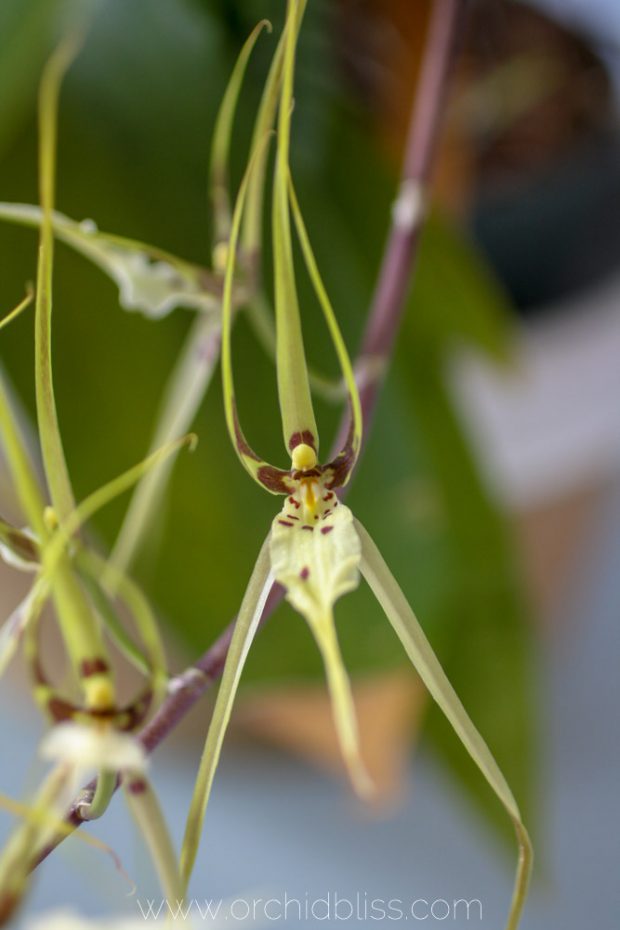
Don’t be put off by the brassia’s nickname, the spider orchid. This orchid will bloom for months on end – and it has a fragrance that fills a room. My brassia has been in bloom for several months. Every time I think it’s done blooming, another flower spike shoots up.
BRASSIA ORCHIDSEpidendrum
These easy-care orchids are used as bedding plants in temperate climates in places like Florida in the United States. Fortunately, if you live in a place that is less than ideal for growing orchids outdoors, you can grow an epidendrum indoors.
EPIDENDRUM ORCHIDSSupplies Most People Find Essential for Successfully Growing Orchids:
NOTE: Most of these items are one-time purchases or are items that will last a very long time. And they do make growing orchids a lot easier.
Fan
Have you noticed spotting on your orchid’s leaves? What you see is likely bacterial growth. Air movement also evens out hot and cold temperatures from windows. To use a fan, simply turn it on to its lowest setting and pointed away from the orchids.
Humidifier
Orchids love humidity. If you live in an arid climate, a humidifier will benefit your orchids – and you too!
5 Benefits of a Humidifier
- Your orchids will love you
- Pulls the plug on static electricity
- Moistures your skin – including your eyes, lips, and fingertips
- Diminishes allergies symptoms
- Reduces snoring – not that you snore, of course
Humidistat
Whether you live in a humid or dry climate, it is nice to know your humidity levels. Too humid – above 50% = mold growth. Too dry = suffocating orchids.
Orchids breathe through pores on their leaves. As they breathe, they lose water. If it’s too dry, they close their pores and effectively suffocate.
A humidistat will help you track humidity levels to ensure you are providing enough humidity for your orchids.
Fertilizer
Orchids cannot live on water alone – they need food in the form of fertilizer. Fertilizers help orchids fight off disease and grow new roots, leaves, and flowers. Overall health is enhanced with fertilizer. Just remember to use a light hand when fertilizing – about 1/4 strength 3 of 4 weeks.
Potting Supplies That are Convenient to Have On Hand:
Potting Mix
Regular potting is essential for healthy orchids. Over time potting mixes accumulate fertilizer salts – which orchids do not like. And secondly, potting mixes break down and compact, preventing air from orchid roots and causing root loss.
I use and recommend rePotme potting mix. This potting mix provides airflow to the roots.
Sphagnum Moss
Sphagnum moss can be used in a variety of ways when potting orchids. It can be added to a bark mix to increase water retention. Sphagnum moss is essential if potting orchids kokedama style. If mounting orchids, sphagnum moss is used as a pad between the mount and the orchid – and to cover the orchid roots.
Extra Pots in Various Sizes
It’s convenient to have at least a few different pot sizes on hand when potting orchids. Sometimes the roots will be much more developed than first imagined, and your orchid may require a larger pot than anticipated. Sometimes the reverse may be the case, and the orchid may need a smaller pot.
Seed Mat
A seed mat is helpful to encourage root growth, especially after potting. The warm temperature of the seed mat will stimulate roots and help your orchid to recover more quickly from the trauma of potting.
Another reason is to help warm up an orchid placed in a cool room. For example, my orchid room gets fairly cool – around 60°F/15.5° C in the winter. Some of my orchids, especially my cattleyas, like a constant temperature in the 70°s F/21° C. By placing my cattleyas on the seed mat, they’re happy year-round.
Your Turn
When buying orchids, stick with an orchid that fit your growing conditions. Learn the care requirements of a given orchid so that you can give it the care it needs. The orchids listed above can do well in a home – no greenhouse required.
Knowledge is power. In this case, it’s the power to grow healthy orchids.
To help you further, start by downloading my free cheat sheet to see where to cut the orchid flower spike after blooms have faded to trigger re-blooming. Click here for the cheat sheet. It’ll be super helpful.

